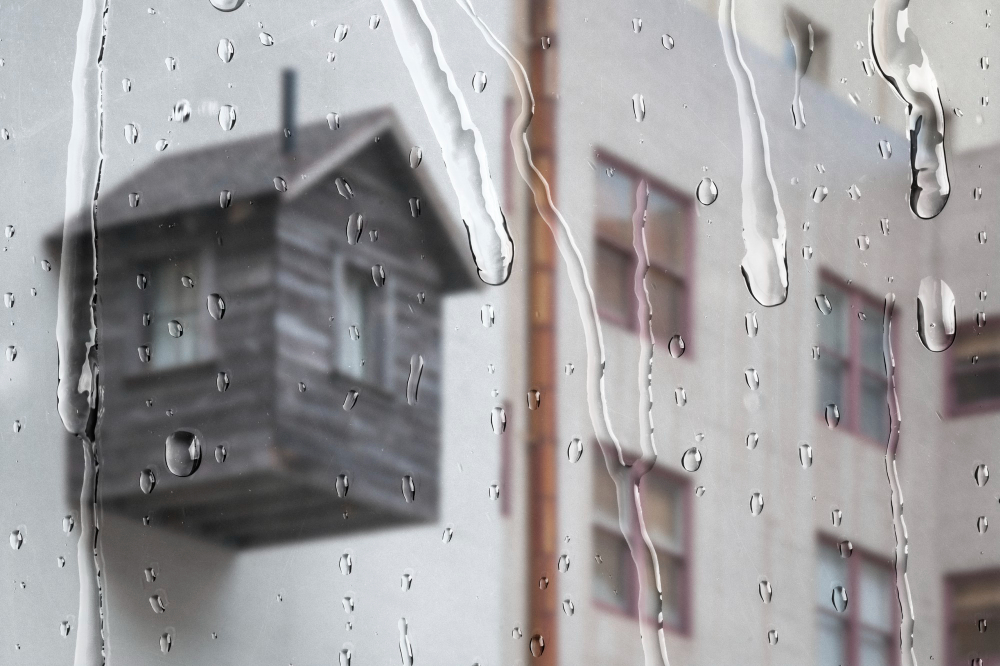Humidity issues in your home can lead to a host of problems, from musty odors to structural damage. In Brussels, where damp weather is common, addressing these issues promptly is crucial for maintaining a healthy living environment. This ultimate guide to traitement humidité Bruxelles aims to demystify the process of combating humidity. Whether you’re dealing with damp walls, condensation on windows, or mold growth, understanding the causes and effective solutions can save you time and money in the long run. Stay tuned to learn practical tips and expert advice on how to protect your home from the effects of excess moisture.
Understanding Common Causes of Humidity
Humidity issues in homes often stem from everyday activities like cooking, showering, and drying clothes indoors, which release moisture into the air. Additionally, factors such as poor ventilation exacerbate the problem by trapping humid air indoors. Water infiltration from leaky roofs, pipes, or foundations can also introduce significant moisture into walls and ceilings, leading to persistent humidity issues.
Understanding these common causes is crucial as it allows homeowners to identify potential sources of excess moisture and take proactive measures to mitigate them. By addressing the root causes, such as improving ventilation and fixing leaks promptly, residents can effectively manage humidity levels and prevent associated problems like mold growth and structural damage.

Signs and Symptoms of Humidity Problems
Recognizing the signs and symptoms of humidity problems is essential for early intervention and prevention of damage. Visible condensation on windows or walls, musty odors in enclosed spaces, and the appearance of mold or mildew on surfaces are common indicators of high humidity levels.
These signs not only affect indoor air quality but can also lead to structural issues if left unchecked. Warped wooden furniture or flooring can also indicate prolonged exposure to excessive moisture. Addressing these symptoms promptly by investigating and resolving underlying moisture sources is crucial to maintaining a healthy indoor environment. Regular inspections and vigilance can help homeowners detect humidity issues early, preventing costly repairs and safeguarding the comfort and well-being of occupants.
Effective Methods for Moisture Detection
Detecting moisture accurately is essential for effectively addressing humidity issues in homes. Visual inspections can reveal obvious signs such as water stains or mold growth, but hidden moisture in walls or ceilings requires more advanced methods. Moisture meters are valuable tools that measure moisture content in various materials, helping pinpoint areas of concern without invasive procedures. Thermal imaging cameras detect temperature variations that often indicate moisture accumulation behind walls or under floors.
Combining these tools with professional expertise enables precise identification of hidden moisture sources, facilitating targeted treatment strategies. Early detection through comprehensive moisture detection methods allows homeowners to intervene promptly, minimizing potential damage and ensuring long-term effectiveness of humidity control efforts. By investing in reliable moisture detection techniques, residents can proactively manage indoor humidity levels and maintain a healthy living environment.
Choosing the Right Humidity Control Solutions
Selecting appropriate humidity control solutions depends on the severity and specific conditions of the humidity issue. Dehumidifiers are effective for reducing moisture levels in enclosed spaces by extracting excess humidity from the air. High-efficiency particulate air (HEPA) filters integrated with humidity sensors offer combined air purification and humidity control benefits, enhancing indoor air quality. HVAC systems equipped with humidity controls regulate humidity levels throughout the home, providing comprehensive climate control.
The choice between portable versus whole-house systems depends on the size of the affected area and the homeowner’s budget and preferences. Consulting with HVAC professionals can provide valuable insights into selecting the most suitable humidity control solution tailored to the home’s specific needs. Implementing the right humidity control measures ensures effective moisture management, promoting a comfortable and healthy indoor environment for residents in Brussels.
Professional vs. DIY Humidity Treatment
When facing humidity issues at home, deciding between professional services and DIY approaches is a crucial consideration. Each option offers unique advantages depending on the severity of the problem and your expertise. Here’s a comparative guide to help you make an informed choice.
- Expert Assessment: Professionals conduct thorough inspections to identify hidden moisture sources and recommend tailored solutions.
- Advanced Equipment: They use specialized tools like moisture meters and thermal imaging cameras for accurate diagnosis.
- Guaranteed Results: Professional services often come with warranties and assurances of effective humidity control.
- Comprehensive Solutions: They offer integrated solutions that address both immediate concerns and long-term prevention.
- Time Efficiency: Professionals complete treatments efficiently, minimizing disruption to your daily routine.
Choosing professional humidity treatment ensures thoroughness and expertise, ideal for complex issues or when peace of mind is paramount. However, it comes with a cost. For simpler problems or hands-on homeowners, DIY methods can be effective if approached with caution and thorough research.
Maintenance Tips for Long-Term Results
Effective maintenance is key to sustaining humidity control efforts and preventing recurring issues in your home. Incorporate these tips into your routine to maintain optimal indoor conditions and prolong the effectiveness of your humidity treatment.
- Check for Leaks: Monitor plumbing, roofs, and foundations for signs of leaks or water infiltration.
- Monitor Humidity Levels: Use hygrometers to track indoor humidity and adjust ventilation or dehumidifiers as needed.
- Clean Air Vents: Ensure vents and air ducts are clean to maintain proper airflow and ventilation.
- Seal Windows and Doors: Check seals and weather stripping to prevent drafts and moisture intrusion.
- Maintain HVAC Systems: Schedule regular maintenance for HVAC units to ensure efficient operation and humidity control.
By implementing these maintenance tips, you can effectively manage humidity levels in your home and extend the lifespan of your humidity treatment solutions. Regular upkeep not only preserves indoor air quality but also protects your home from potential damage associated with excess moisture.
Steps to Prevent Mold and Mildew Growth
Preventing mold and mildew growth requires proactive measures to control indoor humidity levels and eliminate moisture sources. Keeping indoor humidity below 60% reduces the risk of mold growth on surfaces and prevents musty odors associated with damp environments. Proper ventilation in high-moisture areas such as bathrooms and kitchens expels humid air, reducing moisture buildup.
Promptly repairing leaks in roofs, plumbing, or foundations prevents water infiltration that can lead to persistent humidity problems and structural damage. Using mold-resistant materials in moisture-prone areas like bathrooms and basements inhibits mold and mildew growth on surfaces. Regular inspections for signs of moisture and mold help homeowners detect and address issues early, mitigating potential damage and maintaining a healthy indoor environment for occupants.
Importance of Proper Ventilation Systems
Proper ventilation systems play a crucial role in managing indoor humidity levels and improving indoor air quality. In bathrooms, kitchens, and other high-moisture areas, exhaust fans expel humid air outdoors, reducing moisture buildup that can lead to mold growth and structural damage. Fresh air intake vents allow for continuous airflow, promoting ventilation throughout the home and maintaining balanced humidity levels.
Adequate ventilation also helps regulate indoor temperatures, enhancing comfort and reducing the need for excessive heating or cooling. By investing in effective ventilation systems tailored to the home’s layout and occupancy, homeowners in Brussels can mitigate humidity issues and create a healthier living environment. Regular maintenance and proper operation of ventilation systems ensure optimal performance, supporting long-term moisture management and preserving the integrity of the home’s structure.
Conclusion
Managing humidity issues in your Brussels home is crucial for maintaining a healthy and comfortable living environment. By understanding common causes, recognizing symptoms early, and implementing effective moisture detection and control methods, you can safeguard your property from the damaging effects of excess moisture. Whether opting for professional services like those offered by Bruxelles Traitement Humidité – Pro Humidité, or tackling the issue with DIY approaches, proactive management ensures long-term results and peace of mind. Remember, regular maintenance and vigilant monitoring are key to preventing mold growth, structural damage, and preserving indoor air quality.
For expert assistance with humidity treatment in Brussels, contact Bruxelles Traitement Humidité – Pro Humidité at 460233468. Our team is dedicated to providing tailored solutions to your humidity concerns, ensuring a healthier and more comfortable home environment.

